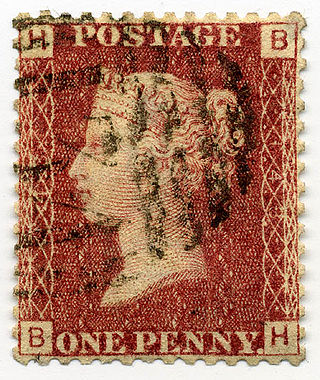
Philately is the study of postage stamps and postal history. It also refers to the collection and appreciation of stamps and other philatelic products. While closely associated with stamp collecting and the study of postage, it is possible to be a philatelist without owning any stamps. For instance, the stamps being studied may be very rare or reside only in museums.
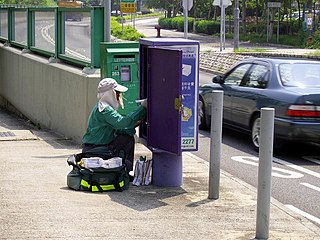
The mail or post is a system for physically transporting postcards, letters, and parcels. A postal service can be private or public, though many governments place restrictions on private systems. Since the mid-19th century, national postal systems have generally been established as a government monopoly, with a fee on the article prepaid. Proof of payment is usually in the form of an adhesive postage stamp, but a postage meter is also used for bulk mailing.

A postcard or post card is a piece of thick paper or thin cardboard, typically rectangular, intended for writing and mailing without an envelope. Non-rectangular shapes may also be used but are rare.

Mail art, also known as postal art and correspondence art, is an artistic movement centered on sending small-scale works through the postal service. It developed out of what eventually became Ray Johnson's New York Correspondence School and the Fluxus movements of the 1960s. It has since developed into a global, ongoing movement.
Golden mean may refer to:

A stamp catalog is a catalog of postage stamp types with descriptions and prices.
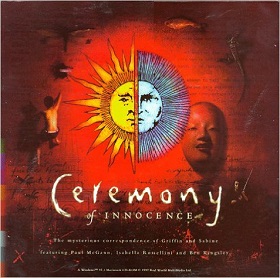
Ceremony of Innocence is a CD-ROM-based game released in 1997. It used a mystery narrative based on the Griffin and Sabine novel by Nick Bantock. The title was taken from the poem "The Second Coming" by Irish poet William Butler Yeats.
Donald Evans was an American artist (1945–1977), who was known for creating hand-painted postage stamps (artistamps) of fictional countries. Evans died in a fire in the Netherlands in 1977.

Catherine Webb is a British author. Under the pseudonym Kate Griffin, she writes fantasy novels for adults. As Claire North, she writes science fiction and novels based upon the work of Homer.

Ron Miller is an American illustrator and writer who lives and works in South Boston, Virginia. He now specializes in astronomical, astronautical and science fiction books for adults and young adults.

Griffin and Sabine: An Extraordinary Correspondence is an epistolary novel by Nick Bantock, published in 1991 by Chronicle Books in the United States and Raincoast Books in Canada. It is the first novel in The Griffin and Sabine Trilogy. The story is told through a series of removable letters and postcards between the two main characters and is intended for an adult audience, as some sources describe the artwork as disturbing.

John Harry Robson Lowe was an English professional philatelist, stamp dealer and stamp auctioneer.
The Griffin and Sabine Saga is a series of bestselling epistolary novels written by Nick Bantock. The first three novels in the series, Griffin and Sabine, Sabine's Notebook and The Golden Mean, form the original Griffin and Sabine Trilogy and were first published in 1991, 1992 and 1993 respectively. Each story is told through a series of letters and postcards between the two main characters, Griffin Moss and Sabine Strohem. Every page features a facsimile of a postcard or a letter actually enclosed in an envelope.
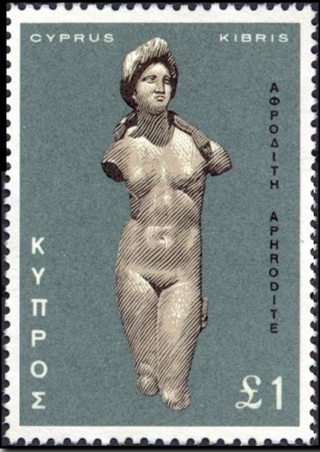
This is a survey of the postage stamps and postal history of Cyprus. The country's postal history is intricately linked to the island's political past.
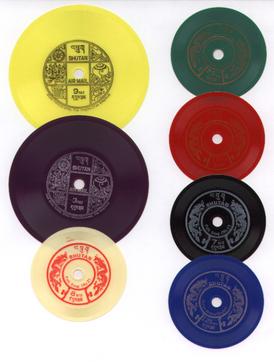
The first postage stamps of Bhutan were issued in 1962, the same year that the first motorable road was opened. Before that there was a mail delivery system in place for official mail using mail runners, and between 1955 and 1962 revenue stamps were accepted as payment for internal mail. With the opening up of Bhutan in the early 1960s, a formal postal system was introduced.
The Foreign and Commonwealth Office Collection was formed by instruction from the Secretary of State for the Colonies on 23 April 1890 to all territories under his authority. The intention was to have a record of all Colonial Postage and revenue stamps, postcards, embossed envelopes and newspaper wrappers. The collection contains single examples of the stamps in use at that time as well as some obsolete issues and single copies, usually from first printings, from 1890. Variations such as colour varieties and alternate watermarked papers are included.
The Board of Inland Revenue Stamping Department Archive in the British Library contains artefacts from 1710 onwards, and has come into existence through amendments in United Kingdom legislation.

The Crawford Library is a library of early books about philately formed between 1898 and 1913 by James Lindsay, 26th Earl of Crawford. By the time of his death in 1913, Crawford was thought to have amassed the greatest philatelic library of his time. Today, the library is part of the British Library Philatelic Collections.
John Evans was an American artist, known for his daily collages made from found objects in the East Village of New York City.
Wolfgang Baldus is a German graphic designer, artist, and philatelic writer. He is known for authoring and publishing books on cinderella stamps in the series History and Background Stories of Unusual Stamps and for his works on the philatelic forgeries and propaganda parodies produced by both sides during the First and Second World Wars.












